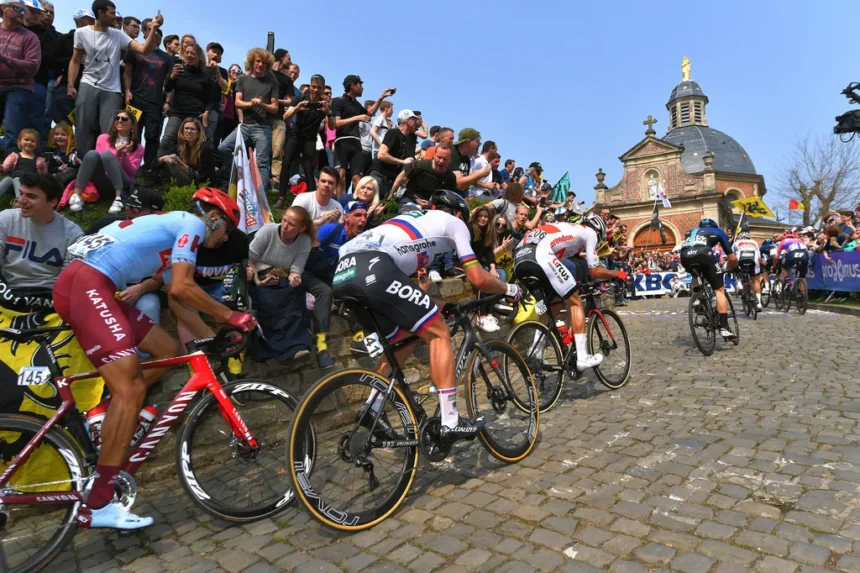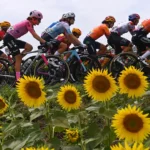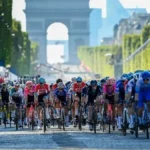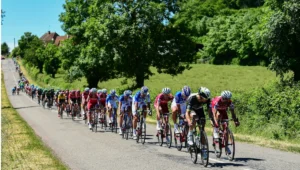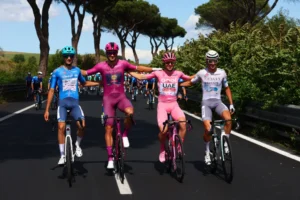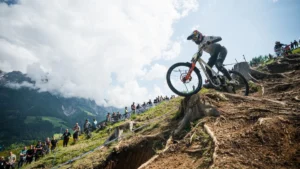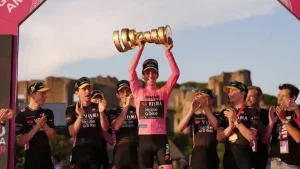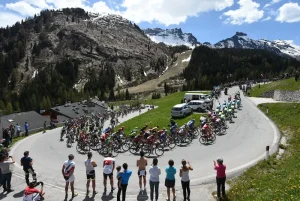Cycling Monuments: In the world of professional cycling, few achievements carry as much weight or prestige as a victory in one of the Monuments. These five one-day races—Milan-San Remo, Tour of Flanders, Paris-Roubaix, Liège-Bastogne-Liège, and the Tour of Lombardy—are considered the most important and historic classics on the calendar.
Each race is a brutal test of endurance, strategy, and resilience. They are not multi-stage events like the Tour de France; rather, each is a single-day battle where everything is on the line. These races take place across Italy, Belgium, and Northern France, traversing terrain soaked in cycling tradition and, often, the scars of history. Indeed, the term “Monuments” is as much a tribute to the historical significance of these races—many of which date back to before World War I—as it is a reference to the memorials that line their courses.
Here are the five Greatest One-Day Races in Cycling Monuments:
Milan-San Remo- La Primavera
The first Monument of the season, Milan-San Remo is often referred to as La Primavera, meaning “The Spring.” Held annually in late March, it marks the start of the spring classics and is one of the longest professional races in the world, typically stretching nearly 300 kilometers.
First held in 1907, this race has only been cancelled three times—in 1916, 1944, and 1945. Its route runs from Milan to the Ligurian coastal city of San Remo, winding through breathtaking scenery but maintaining a relatively flat profile. That flat terrain gives rise to its nickname, “The Sprinter’s Classic.” However, late-race climbs such as the Cipressa and Poggio often prove decisive. The Poggio, just 6 km from the finish, can shatter the hopes of pure sprinters if a daring attack succeeds.
Tour of Flanders- Ronde van Vlaanderen
Next in line is the Tour of Flanders, or Ronde van Vlaanderen, typically held in early April. First raced in 1913, it has grown into a national sporting holiday in Belgium, where cycling enjoys an almost religious following.
Unlike Milan-San Remo, the Tour of Flanders is a rough, gritty affair. Its iconic short, steep climbs—known as “bergs”—are often cobbled and unforgiving. Climbs such as the Oude Kwaremont and Paterberg come late in the race and can be make-or-break for contenders. Starting in Antwerp and finishing in Oudenaarde, the route demands a perfect mix of strength, strategy, and luck.
This is a race where the strongest riders are exposed and the cleverest tacticians are rewarded.
Paris-Roubaix- The Hell of the North
Often considered the most iconic of all the Monuments, Paris-Roubaix dates back to 1896 and is known by many nicknames: the Queen of the Classics, the Hell of the North, and simply, Roubaix.
Held in mid-April, this race is a bone-rattling journey across Northern France’s legendary cobblestone sectors—some of which are only opened for use on race day. Unlike the relatively polished cobbles of Flanders, Roubaix’s roads are rugged, uneven, and brutal, often turning to mud or dust depending on the weather.
Punctures, crashes, and mechanical failures are part of the chaos, with even the strongest riders at the mercy of bad luck. Specialized equipment—frames, wheels, and tires—is essential to survive. The race famously ends in the Roubaix Velodrome, where the roar of the crowd meets the exhausted riders with both celebration and relief.
Liège-Bastogne-Liège- La Doyenne
The fourth Monument is Liège-Bastogne-Liège, also known as La Doyenne—“The Old Lady”—because it is the oldest of all the classics, first held in 1892.
This race differs in character from the cobbled Monuments. Set in Belgium’s Ardennes region, it features a mountainous profile with a relentless series of climbs, particularly in the final 100 kilometers. Riders travel from Liège to Bastogne and back, encountering legendary ascents like the Côte de la Redoute and the Côte de la Roche-aux-Faucons.
Liège-Bastogne-Liège is a race for the climbers and puncheurs—riders who thrive on repeated steep gradients and can withstand a day of sustained effort. It is a race of attrition, where patience and timing are just as vital as power.
Also Read: Tour de France: Riders With Most Titles
Tour of Lombardy- Il Lombardia
Unlike the other four Monuments, which take place in spring, Il Lombardia—the Tour of Lombardy—is held in October, earning its romantic nickname, “The Race of the Falling Leaves.”
First run in 1905, this race is a scenic and selective tour through Northern Italy, particularly around Lake Como. It is known for its long, picturesque climbs, such as the iconic Madonna del Ghisallo, and technical descents that reward fearless descending and precision handling.
For many riders, Lombardy is the final major race of the season, a last chance to claim glory before the long winter break. Its beauty and brutality combine to make it one of the sport’s most beloved races.


